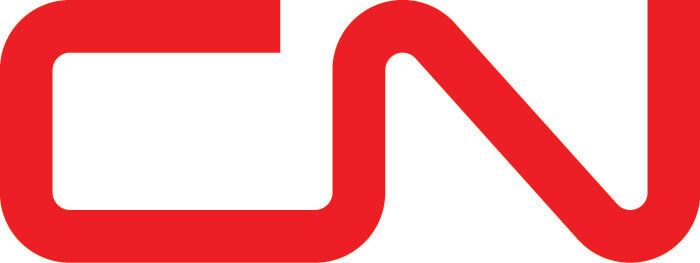 |
| The man, the myth, the legend. |
If you don't already read Martin Shkreli's prison blog, you should. Put aside the brash personality and multiple felonies, and you're left with a brilliant mind. His biopharma picks won't help us a lot in Canada but his thinking will.
Years back, Stephen King wrote a book on writing (called On Writing), where he shared his reading lists and admitted to not fully understanding half of the books on them. Why read these? Well, he argued, reading genius writing makes you a better writer. Even if you don't fully absorb it.
Shkreli has the same sort of mind for investing. I've watched many hours of his YouTube videos where he dissects particular aspects of the biopharma industry. I've retained almost nothing of the videos (high science is beyond me), except the distinct impression that he operates on a different plane than the rest of us. Genius is rare and contemporary genius even more so.
One night, MS was clicking through some pharma website to find the meat. He described the website as the typical "perfunctory nonsense" that you often see in that industry - stock photos displaying multi-ethnic people smiling and having a good time all to make you, the visitor, buy in to some clinical trial or drug. It was a necessary marketing tactic, if not a bit dull.
 |
| 40 oz dreams |
That phrase, perfunctory nonsense, has stuck with me. I find myself asking this question with most sites I visit. The great majority fit the bill - just a few cheap carnival tricks slung together to rob you, dear visitor, of your hard-earned shekels.
I will admit to having a sort of envy of companies that don't have websites. It's so backwards that it comes fill-circle and becomes sort of avant-garde. Almost hip. Companies like E-L Financial (ELF) and Becker Milk (BEK-B) are perpetually on my watch list. (ELF at least has a logo on their financial report; BEK-B has no visual identity whatsoever.)
Which brings me to a related matter. E-L and Becker have earned the right to not have websites by being decades-old profitable companies. If you're a company still trying to make your mark you have to put a lot of effort in to your brand. It's not hip at all to neglect the website in such cases. That sort of neglect is earned.
Street Capital Group (SCB) hit a 52-week low this morning at 59 cents. There might be some decent value here. Strip out the property, goodwill, intangibles and equipment from the assets and you're left with 80+ cents a share. There are mortgage-related risks but certainly something to look at. SCB became a schedule-1 bank in 2017 and have begun rolling out GICs as their first deposit product.
As an investor I could maybe overlook SCB's semi-competitive GIC rates if their website wasn't hot garbage. You could literally build something better using Wix in an afternoon. At this stage in SCB's development, the website is an important sales and marketing tool. They should be throwing a lot more money at it. Middling GIC rates and a tire fire of a website are not going to help differentiate SCB from the other banks in the country. At this stage the perfunctory nonsense is, you know, non-negotiable. You gotta make your mark, SCB.
A definition of value
Finally, a definition of alpha that leads us to a definition of value:
"Alpha, which we can define as human-discoverable arbitrage opportunity, is a variable that has specific behavior. I conjecture alpha is correlated to the VIX. When volatility is high and markets are in panic, alpha opportunities exist as investors lose it." - http://martinshkreli.com/uncategorized/12-14-2018/Losing it is what investors appear to be doing over The Stars Group (TSGI), another name that is perpetually on my list. The problem with TSGI is that it's really not a value stock by any metric. It's a growth stock. It's swimming in debt, it's swallowing competitors so fast that it's hard to keep track of them and it's barely profitable most quarters.
What is value, though, if not opportunities exposed by investors losing it? Call yourself a value investor, a growth investor, a whatever-investor. Any active investor is after the same thing, alpha, however we can find it.
Since PokerStars swallowed Full Tilt Poker in 2012, they have been the market leader and it's not close. They have eight to 12 times more traffic than any online poker room in the world at any time of the day. Even more if you exclude IDN, which is only accessible in Asia. It is no stretch to say that TSGI is to poker what Amazon is to retail, or Google is to search. The question is, how much is that worth.
TSGI's ownership, in its current form, began in 2014 (it was privately held before then). Here is their revenue as a public company, in millions USD:
- 2014: 593
- 2015: 988
- 2016: 1,156
- 2017: 1,312
- 2018: 1,737
Over that span, book value has increased from 7.50 per share to 20 but the stock price has remained flat (it hit 50 at one point but fell on lower revised guidance this year).
This stock is definitely outside of my comfort zone despite the obvious value. There is money there. It's sort of giving me an existential crisis to tell you the truth. If I buy into this then what's to stop me from buying into any other wild fad? Micron? Snap? HMMJ?
I don't think I'm going to buy anything else in 2018. I've designated Dec 24 as my day to sell the losers. I am hoping for a week-long rally between now and then.
I will end this post with a link to my favourite Christmas music video:


















